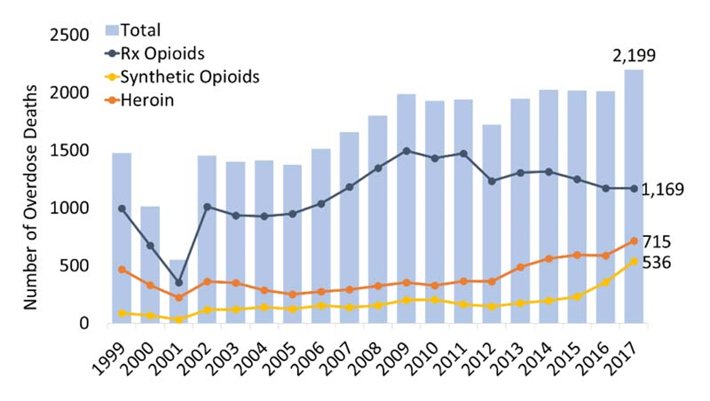Meth and Opiates – Growing Issues In California

Unfortunately, recent reports indicate that the Golden State is now experiencing increasing addiction problems, including overdose deaths. In fact, opiate addiction statistics, in particular, are now rising rapidly in America’s most populous state. And meth abuse, the dire crisis that no one wants to talk about, has brought on a more than 200 percent increase in meth-related deaths in California.
How can families protect each other from the risk of addiction in the Golden State? And perhaps most importantly, what can families do should someone in the family fall prey to addiction?
Opiate Addiction in California – A Deadly Trend on the Rise
I2,199 people died from opioids in California in 2017. Since the turn of the century, the main driver in California’s opiate deaths had been prescription pain relievers. Prescription drugs claimed 1,169 lives in the state that same year.

However, the most recent uptick in opioid deaths in California is not from legal prescription drugs. The most significant increase in drug deaths came from illicit fentanyl (made in clandestine drug labs) and heroin. In the past two years, fentanyl deaths in the Golden State have more than doubled.
Most public health experts will say that opiate overdoses are not the number one health crisis in California. And there’s some truth to that. California loses about five people per year to opiate overdoses for every 100,000 residents in the state. Compare that to a national average of 14 opiate deaths per 100,000 residents.
But some regions of California are starting to experience the brutality of the opiate epidemic. How long before it’s a state-wide problem? Take Lake County, for example. Lake County, California (about 100 miles north of San Francisco) has the highest rate of drug deaths in the state. This county’s annual drug deaths come in at 48 fatalities for every 100,000 residents in what amounts to a mostly rural county. Compare that to the state average of 12 drug deaths for every 100,000 residents.
Lake County has a population of 64,095 and a poverty rate of 22 percent, compared to a statewide average poverty rate of 15 percent. Just in this one county alone, about three people die from drug overdoses every month. In a county that’s the epitome of rural, small-town America, three overdose deaths per month is a huge blow.
California may have been one of the last states to experience the spread of opiate addiction. But it’s happening now, and local communities, families, and public health groups need to advocate for both drug prevention and effective addiction treatment.
Meth Addiction Creeps Up in California
For the last twenty years In the United States, the primary focus in both public health and criminal justice sectors has been on cracking down on opiate supply, demand, addiction, prevention, treatment, etc. And that’s somewhat understandable, as opiates claim tens of thousands of lives across the nation each year. The result is untold suffering among millions of American families.

Unfortunately, California’s drug problem does not begin and end with opiates.
As the nation has focused on opiate addiction, meth addiction has crept back into the fold. This phenomenon has been particularly prominent in California. Despite the fact that law enforcement officials say that thanks to DEA crackdowns and other law enforcement efforts, there are fewer domestic meth labs in California, unfortunately, meth trafficking into California from cartels in Mexico has soared. That’s a nationwide problem, but given California’s proximity to drug syndicates just south of the border, California is now Destination #1 for meth trafficking.
The proof is in hospitalization records. One nationwide study indicated that hospitalizations related to meth and other amphetamines are up a shocking 245 percent, from 2008 to 2015. Most of these hospitalizations are occurring in the West, primarily in California.
Meth addiction is the public health crisis no one is talking about. The national focus is still set on the opiate epidemic. But in California, amphetamine-related overdose deaths rose by 127 percent, from 456 deaths in 2008 to 1,036 deaths in 2013. But from 2008 to 2013, opiate deaths only rose eight percent (1,784 deaths to 1,934 deaths). More people die in California from opiates than from meth, but the meth problem is growing at a rate exponentially faster than the opiate problem. How long will it be before meth becomes the most lethal drug problem in California?
Seeking Help for a Loved One
Helping a loved one overcome a drug problem can seem like a never-ending task. When people use drugs, they develop a compelling need to keep using those substances. They may resist treatment because they feel as though they cannot face life without their drug of choice.
For over 50 years, Narconon has helped thousands of individuals overcome their dependencies on drugs and alcohol. Narconon works because it addresses the source of addiction. Narconon helps recovering addicts get to the bottom of why they started using drugs in the first place. With the help of the Narconon program, even people who have tried to kick drugs in the past and failed can finally have a safe, effective, drug-free path towards sobriety.
Meth addiction in California may seem like an insurmountable crisis for those immediately affected by it. If your son or daughter, brother or sister, spouse, grandchild or other family member is struggling with meth addiction, make sure they get the proper help. There is no substitute for residential drug treatment, and there is no time like the present. Make sure your loved one gets treatment today.
Sources:
- https://www.drugabuse.gov/drugs-abuse/opioids/opioid-summaries-by-state/california-opioid-summary
- https://www.usatoday.com/story/money/2019/08/02/opioid-crisis-counties-with-worst-drug-problems-in-every-state/39822385/
- https://californiahealthline.org/news/overshadowed-by-opioids-meth-is-back-and-hospitalizations-surge/
- https://jamanetwork.com/journals/jamanetworkopen/fullarticle/2707432
Reviewed by Claire Pinelli, ICAADC, CCS, RAS, LADC, MCAP


